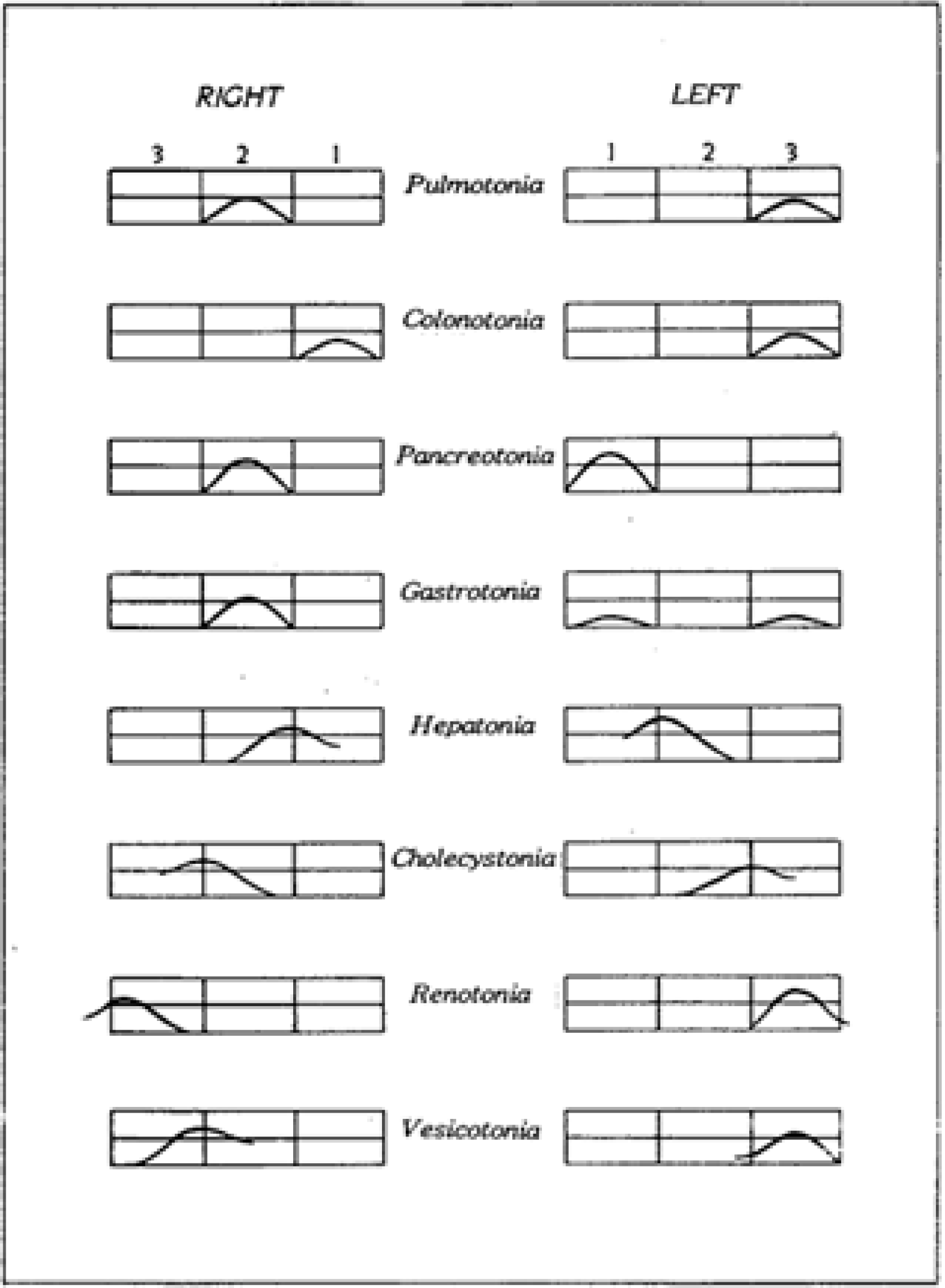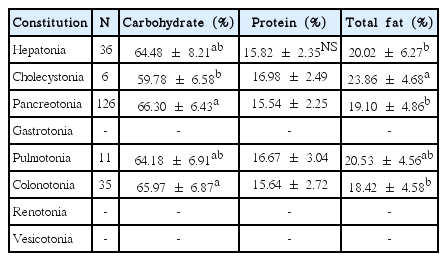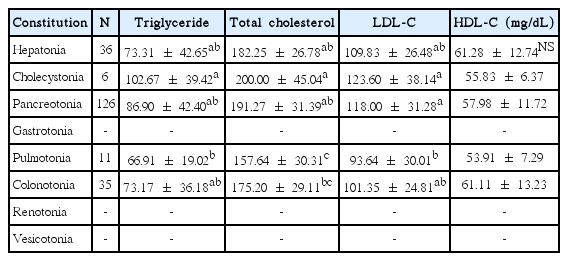Relationship Between Nutrient Intakes and Blood Biochemical Parameters of Korean Female Subjects Classified by Eight Constitution Medicine
Article information
Abstract
Objectives:
To investigate the relationship between nutrient intakes and blood biochemical parameters of Korean women classified by the Eight Constitutions.
Methods:
The constitutions of female subjects were determined by the methods of eight constitutional pulse formation. Anthropometric characteristics and blood biochemical parameters including fasting blood glucose (FSB), serum lipid profiles, homocysteine, and insulin were determined. Food frequency questionnaires were used to evaluate the nutrient intake of the subjects.
Results:
Subjects were classified as Hepatonia 16.8%, Cholecystonia 2.8%, Pancreotonia 58.9%, Pulmotonia 5.1%, Colonotonia 16.4%, respectively. Gastrotonia, Renotonia, and Vesicotonia individuals were not present in this study. BMI, total calorie and fat intakes of the Mok constitutions (Hepatonia and Cholecystonia) were higher than those of the Gum constitutions (Pulmotonia and Colonotonia) (p<0.05). Triglyceride, total cholesterol, and LDL-C concentrations for the Cholecystonia were the highest while those for the Pulmotonia (p<0.05) were lowest, which is in line with the results from nutrient intakes.
Conclusions:
Total calorie and fat intake among subjects with different constitutions were different. BMI and serum lipid profiles positively associated with calorie and nutrients intakes were significantly higher in Mok constitutions than Gum constitutions. Personalized diet plans seem to be needed for subjects on a special diet due to the individual constitutional differences.

LEFT: Left hand of patient
RIGHT: Right hand of patient
1: Pulse detected by 1st (index) finger of physician
2: Pulse detected by 2nd (middle) finger of physician
3: Pulse detected 3rd finger of physician

Comparisons of the Anthropometry Characteristics Among the Subjects Classified by the Eight Constitution

Energy Consumption and the Amounts of Major Nutrient Intakes of the Subjects Classified by the Eight Constitution

The Ratio for Nutrient Intakes to the Total Energy Consumption of Subjects Classified by the Eight Constitution

Concentrations of Serum Glucose, Insulin, and Homocysteine of the Subjects Classified by the Eight Constitution

